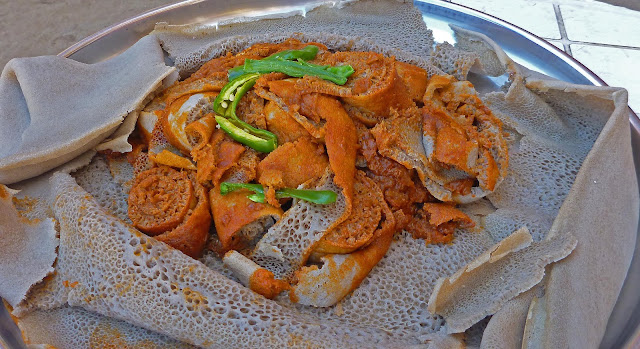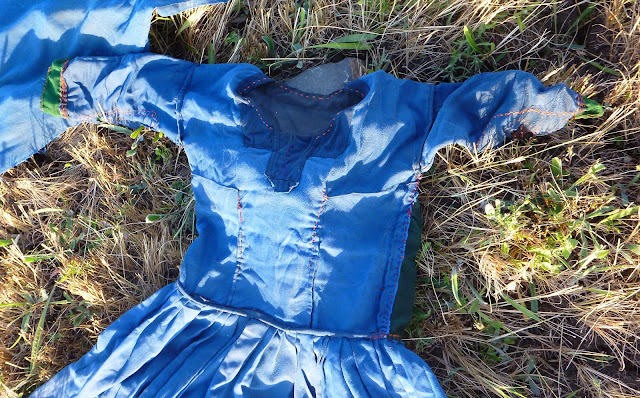A couple of weeks ago the now dead head-high grass
surrounding all the hospital buildings had finally dried out enough to be cut
down and stacked, and later carted off to
be used, I think, as thatching . I had been waiting for this to be done ever
since I arrived because the tall grass
blocks the view from my front door of the row of village houses and all the
animal and human traffic that passes by on the other side of the hospital fence
10 meters away. A common sight now revealed again, one that put me off my
morning coffee was children squatting down not far from the fence to poo on the
open ground . But my eye was always drawn to a distant upward sloping horizon across which on market days
could be seen a steady stream of tiny figures creeping slowly toward town, and
in the evening back again along a country trail. I often wondered where they
had come from and what was over the horizon - until yesterday when I at last
got to walk there.
This track turned out to be the path to a waterfall that I had been hearing about, that other volunteers here had visited , and which I decided yesterday afternoon I also should visit, and I set off at about 5 pm with Shewaye and Anna , a volunteer midwife who arrived last weekend. She has been here before and had already visited the waterfall but was keen to go again. In the end, because of fading light we stopped short of the waterfall but had a good view of it from a distance as the sun was going down behind us. The walk across the fields had taken us out of the town, past one of those lovely circular churches, and near a small cluster of homes.
On our return we were invited to drink “‘tulla” which is home brewed beer, and given some flat home cooked bread to eat by a group of people working on a huge heap of recently harvested teff. They were extracting the tiny seeds by spreading the teff stalks across a circular sort of arena, then having their cattle walk round and round on it and lifting off the depleted stalks with an angled stick, leaving the tiny seeds and lots of chaff on the ground. Later the seeds and the chaff would be further separated by throwing it high into the air in a light breeze. They had no doubt been working there all day long and seemed glad of an opportunity to crowd around and have their photos taken – they were lovely friendly people, and obviously very poor .
 |
| Heading home |
 |
| Looking at their Pictures |
As it got dark and we headed back to Motta, half an hours
walk away, we started to hear the noise of the town and see the dust rising
from the road as a bus rumbled past, a few lights – Motta suddenly seemed like
a big place! And then my phone rang and we quickened our pace to get back and
see someone the midwives were worried about. Its tempting to get misty eyed and
sentimental about the sort of simple village life we had just glimpsed – and I
think if you weren’t old or sick, or in labour in such a place, there would be times when it could probably
provide just about everything you could want.
Certainly the kids seemed happy.
Back in Motta, we quickly sorted out the problem and then
had dinner. Since Anna got here last week we have been sharing the cooking, and
it was her turn and we had a pasta dish with local spinach and the first cheese
Ive had this year because Anna had bought with her a big ball of lovely dutch
cheese. The previous night she had made a tasty salad to supplement fish cakes
that I had made.
Today is Saturday but I wont be going to the market. Instead,
I am packing up my stuff and leaving for Bahar Dar, as my two month spell comes
to an end. In an hour or two my replacement should be arriving – I hope they
are sending her in a more reliable vehicle than they one that was supposed to
bring me here – otherwise she might end up on the bus and not get here till
8pm. However I am not leaving Ethiopia
for another two weeks, as I am going to have a holiday with Ewin who flies here
in a few days – we are going to tour the southern parts of Ethiopia. Not sure
how much internet access I will find down there but the next few days I will be
in Addis.
























